Acoma Sky City
The Acoma Pueblo is one of the more unusual Pueblos and is down a long side road off the I40, a road which leads to nowhere other than the Pueblo.
The approach to it is quite dramatic in that initially there is the usual New Mexico countryside and then this very large
mesa starts to appear in front of you and just gets larger and larger. It stands on its own in the middle of a large plain which is surrounded on all sides by nearly sheer canyon walls. We were to learn that it is called the Katsimo Mesa and is thought to be the first place that the Acoma lived when they came to the area. They lived there until (so their stories tell) the only staircase down (cut into the rock) was destroyed in a thunderstorm.
Close up, the Mesa looks like a version of Devil’s Tower
and there are other mesa in the valley which also are dramatic in shape.
The Acoma then built their Pueblo on the top of a nearby
mesa and you can see it as you approach the visitors centre. This new Pueblo is thought to date from around the 1200s.
Visitors are not allowed to make their own way into the pueblo, there are police at the bottom who guard the entrance. So for a fee, we were taken on a guided tour.
At the top of the mesa is the entrance to the staircase which leads down. At the bottom, the entrance to the staircase is well hidden and therefore the early Spanish “explorers” where unable to find a way to the top of the mesa to plunder the gold which they thought the villagers must have. They had this theory because the mesa buildings looked golden in colour – a colour due in fact to the straw in their construction, not to gold hidden in the walls.
It is a steep staircase and there are handholds along the stairs. Hence, the women (who by gender were responsible for water collection) used to collect water from springs in the valley bottom and walk up the stairs balancing the water containers on their heads.
To supplement the water collected at the bottom, there are
a few ponds on the mesa top where rain water collects in a rather unhygienic way.
Nowadays, only about 13 people live in the Pueblo on top of the mesa – these are the tribal leaders who have to live their during their one year term of office. As our guide put it, “we like to live where there is running water, electricity and close to Walmart, why would we live up here?”
Mica found in the valley was used as window glass and above is one of the few mica windows left in the Pueblo. Although the mica is not clear, it is transparent enough to let light through.
Many of the older houses are built of Adobe
as is this traditional oven which is used in the same way as a stone pizza oven. It is still occasionally used and our guide said that she had used one but it was such hard work (getting the wood, heating the inside of the oven, clearing it out and baking the bread) that having done it once, she prefers to go to the supermarket.
This double ladder leads into a Kiva which is where the people of Acoma practised their religion. The Spanish were determined to impose Christianity upon the village and so destroyed every Kiva they could find
and forced the villagers to build a (rather nice) Catholic church. We were not allowed to take pictures of the inside of the church or its graveyard.
Selling pottery and handicrafts seems to be something which many Indians do and hence there were numerous (too many) stalls scattered around the village at which we were expected to stop and admire what was for sale and (ideally) buy something. Much of the pottery was very nice but not suitable for anyone living in an RV which has the habit of bouncing rather wildly whenever it goes over a bump (so far we have broken four plates and two glasses).
The views over the valley were superb, here once can see the old fields used by the villagers. Now the rain comes from the west so the field have been relocated to the other side of the valley.
And as we were about to leave, the sun came out on Katsimo and a crow flew over – rather appropriate because legend says that two girls were trapped on the top of Katsimo when the stairs collapsed and escaped by turning into birds.
and as we left the valley and go to the top of the hills surrounding it, we were treated with a superb view over the whole of the valley and could just pick out the Pueblo on the far side.
Of course, there was the chance to purchase some genuine native craft work here as well – someone had set up shop in an isolated viewing point on a road which can get only a few travellers each day.
And as we drove on to our campground, the monsoon rains came down with a ferocity we have never experienced anywhere else before.
El Malpais
Up another long loop through tribal areas of New Mexico is
a National Park called El Malpais which is the local version of “The Badlands” which we so much enjoyed in South Dakota. This time, it is a volcanic area with a track through the volcanic park around which you can walk.
We enjoyed the walk, not just because it was a well managed track through an extinct volcanic area, but also because it was one of those rare occasions when you can be completely alone and distant from the rest of the world and literally the only sounds were the wildlife and the wind. There have only been a couple of other occasions when we can say we have truly experienced this and hence we remember them.
The walk started through the remains of the cinder flow from the volcano which is now fertilised,
and went passed collapsed Lava Tubes (like those in Craters of the Moon)
then a lava trench down which the lava flowed
from the Cinder Cone at the highest point in the park
and all around us were numerous examples of flowers and plants thriving is this dry and hostile environment.
At about the moment we had got to the furthest point from our van on this very hot morning, we started to see and hear a very large and threatening thunderstorm heading our way. Being the highest point on the top of a Cinder Cone during a thunderstorm is not a good idea and so it became a rather fast walk back to safety.
It was however a wonderful morning and to be recommended to anyone who travels nearby.
El Murro
Further along the same isolated road is El Murro which means “The Headland” and it is a most interesting National Park which combines a Pueblo (again on the top of a Mesa) and records left by those who passed through the area during the past 400 years – a sort of dated “Kilroy was here” type of record.
From a distance, El Murro shows as a promontory and few hundred feet high, the Pueblo is on the top and the inscriptions are around the bottom.
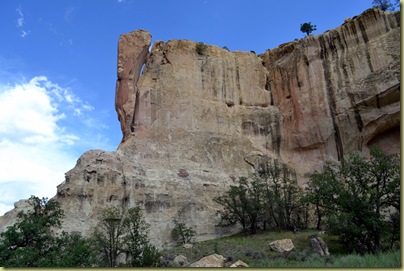
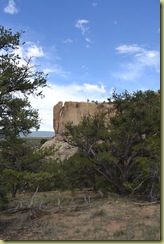 The walls are fairly shear and the effects of geological erosion are showing. A few sections look like they are near to collapse and indeed, part of the official route around the base was closed because of a recent rock fall. The soil structure is extremely fragile and therefore you are encouraged to walk on the official tracks at the bottom because (as in Antarctica), the slightest damage to the soil takes years for nature to repair.
The walls are fairly shear and the effects of geological erosion are showing. A few sections look like they are near to collapse and indeed, part of the official route around the base was closed because of a recent rock fall. The soil structure is extremely fragile and therefore you are encouraged to walk on the official tracks at the bottom because (as in Antarctica), the slightest damage to the soil takes years for nature to repair.
To get to the remains of the Pueblo on the top, you have to climb up a combination of steps carved into the rock; steps provided by the Parks Service and tracks carved into the rock
To an experienced Mountain Goat, it presents no problems but there are places where you just have to “go for it immediately” and not “think about it first”.
From the top, the view across the plains is superb but it
also showed that the thunderstorm which has threatened us at El Malpais was heading our way again to have another go at us when we were the highest thing on the top of the plateau.
Hence the walk around and across the top of the plateau
which you are encouraged to take between two lines
marked on the rock floor (because to stray off them takes you to the unguarded edge)
became a fairly fast walk on a hot an humid afternoon in order to get below the plateau edge before the storm came and Pat’s face started to match the colour of her hat as we got hotter and hotter.
The view across the top
and down into a canyon hidden within the promontory
and over the valley floor was quite superb and it also had a mystical quality about it.
Then you come across the remains of the Pueblo whose correct name is Atsinna – meaning “where pictures are on the rocks”.
The Pueblo was occupied from around 1275AD to 1400AD and 18 (out of an estimated 800) rooms have been excavated.
The people who lived here are thought to be the ancestors of or related to the Zuni people who now live about 50 miles away on the plain.
Eventually we get down below the tree line and are no longer the highest thing around and can relax somewhat.
Carved into the base of the rock face over about a 500 metre section of the cliff face are a thousand or more inscriptions from people who passed by the rock over the years including:
in 1866, R H Orton who was a Captain in the 1st California Cavalry – he went on to become the adjutant-general of California after the civil war – it is thought he was on his way back to California when he carved into the rock;
Lt JH Simpson an engineer for the army and Mr RH Lern, a Philadelphia artist employed by the army as a topographer were the first English speaking people to make a record of Inscription Rock. They spent two days copying the inscriptions and petroglyphs
The above reads:
SE P[a]sa A 23 DE M[arz-or May-]o DE 1632 A[nos]
A LA Beng[an]sa DE M[uer]te DEL
p[adr]e Letrado LUJAN
which translates as
On the 23 of March [or May] of the year
1632 we travel to avenge the death of
Father Letrado-Lujan
In 1629, Father Letrado built the earliest mission chapel at Gran Quivira southeast of Albuquerque and was transferred to Zuni in February 1632 – he was killed a week after arriving. On hearing of his death, the Governor sent a punitive expedition of soldiers, one named Juan Lujan from Santa Fe to Zuni to pacify the Zunis.
One of the oldest is that of the first governor of New Mexico Don Juan de Onate. In 1604 he left the settlement of San Gabriel with 30 men in search of “the South Sea” (the Pacific Ocean). On his return he left this inscription:
Paso per aq[u]i el adelantado Don Ju[an] de Onate del
descubrimyento de la mar del sur a 16 de Abril de 1605
which translates as
Governor Don Juan de Onate passed through her
From the discovery of the Sea of the South
on the 16th April 1605
There are many more and we could have spent a long time looking at them all with the help of a useful guide book lent to us by the Parks Service.
El Murro is a very interesting place to visit, particularly if you are prepared to put in the effort of climbing to the top of the promontory.
However we have to continue on westwards along an empty, long and straight road heading towards dark rainy clouds
and just after we cross the Arizona border
the skies really open up and we are driving through the
most intense rain we have ever met. When we get to our campground, we are told that it is only the third time it has rained that year and they want every drop – so we should not complain!
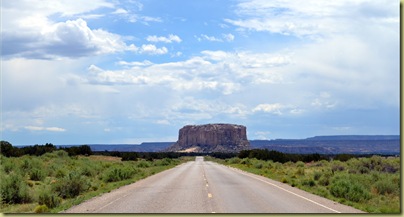
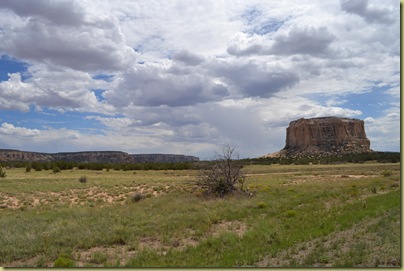
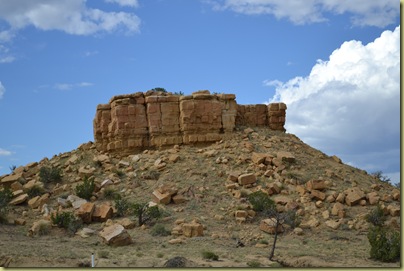
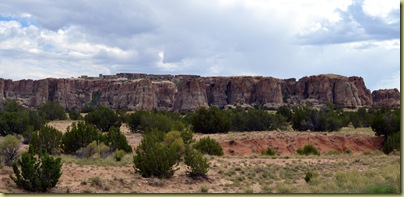
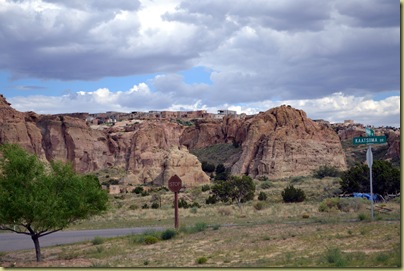
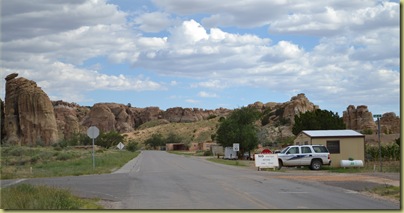
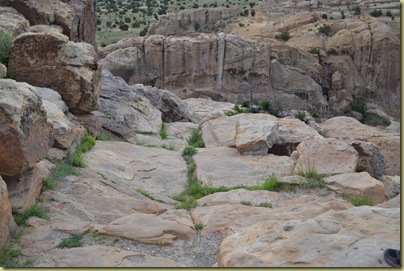
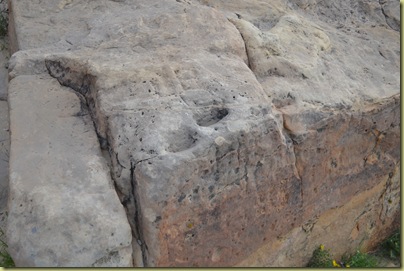
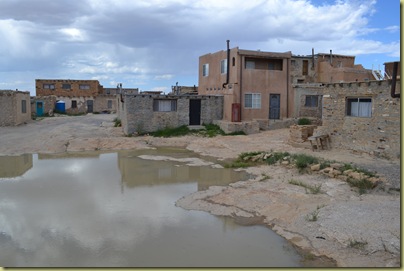
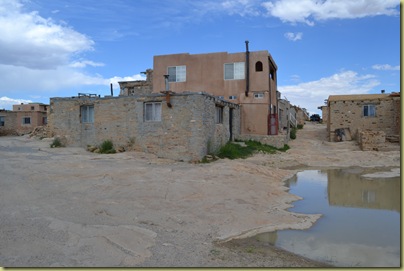
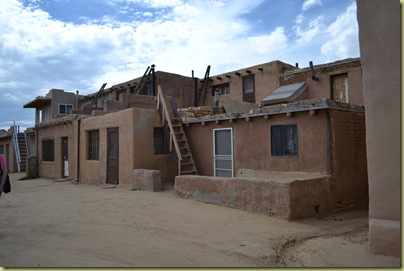
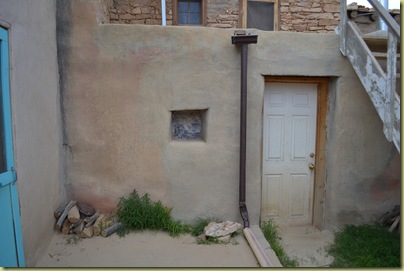
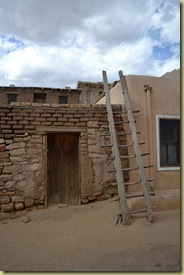
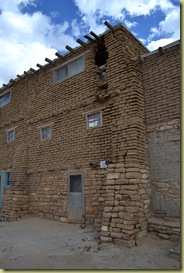
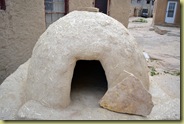
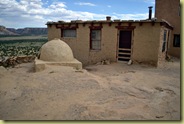
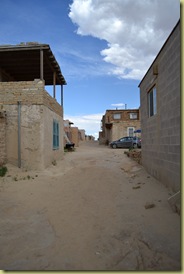
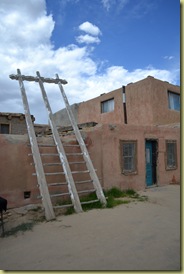
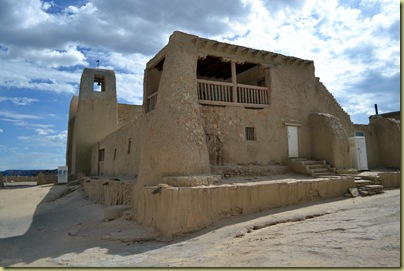
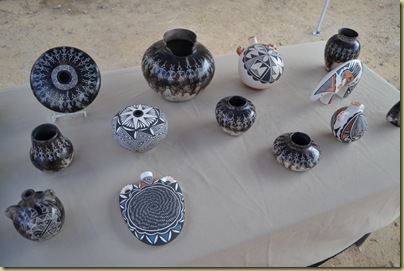

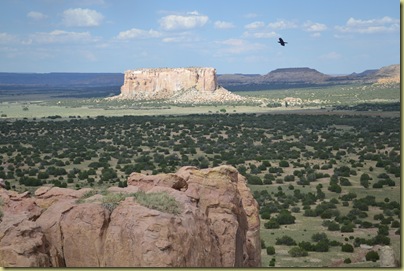
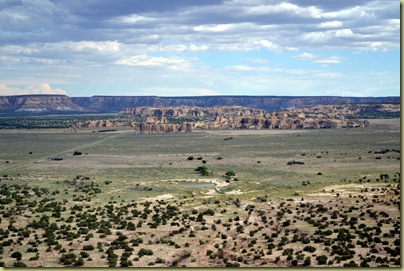
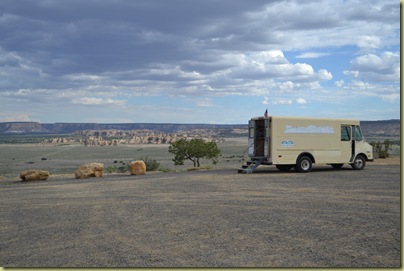

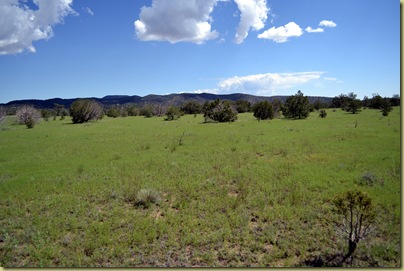
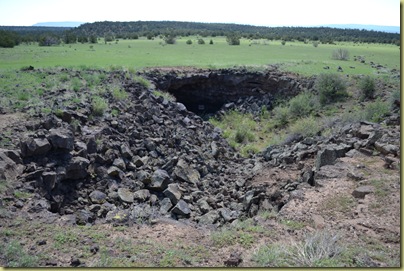
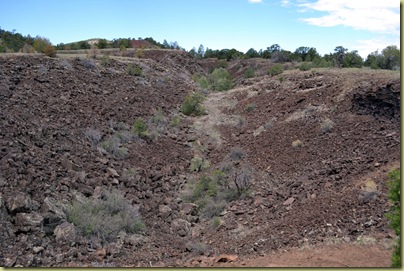
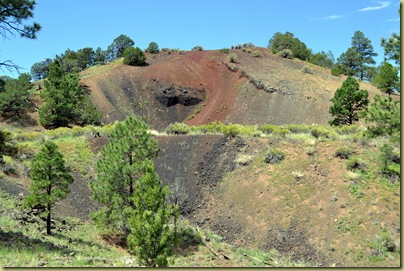
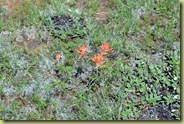
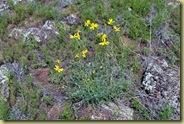
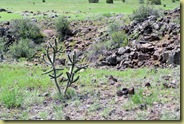
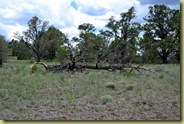
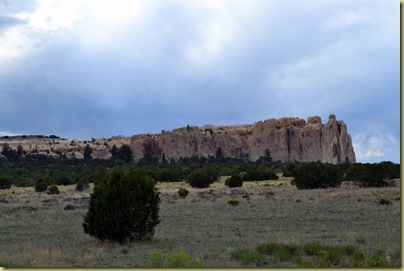
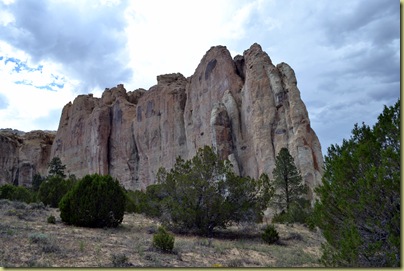

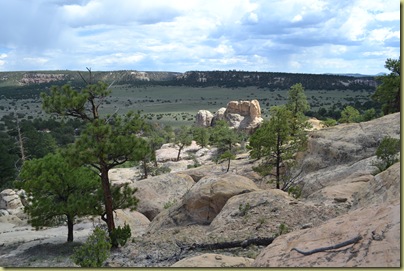
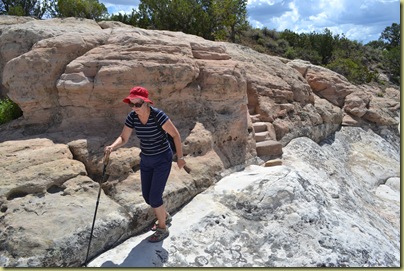

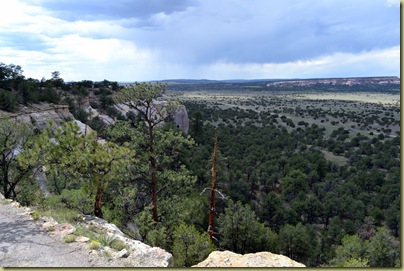
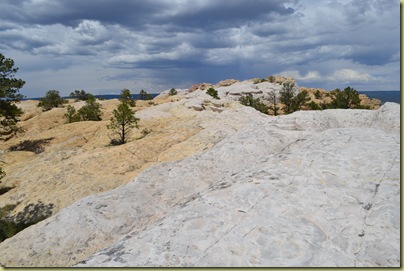

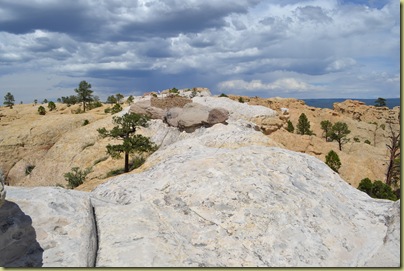
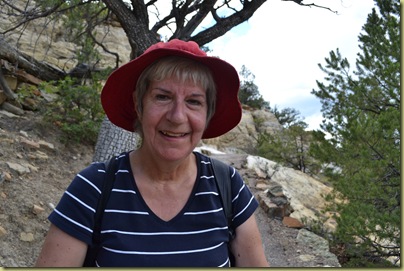

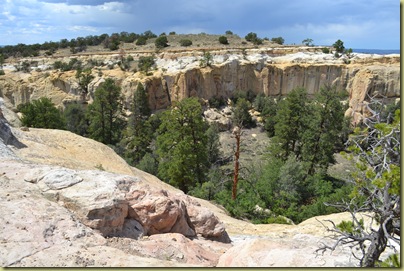
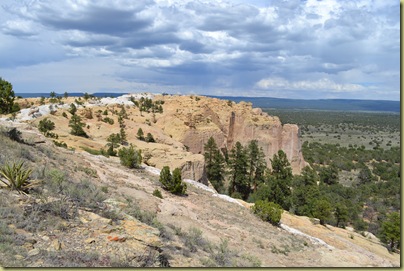



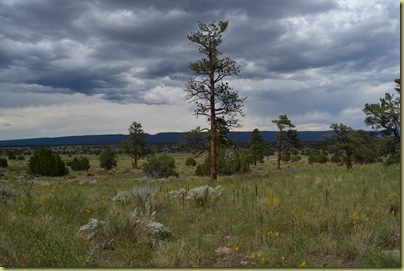
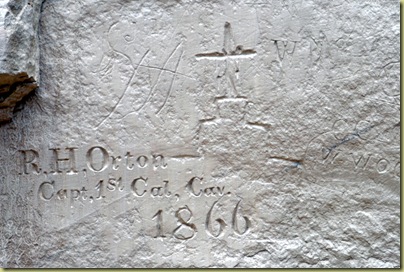
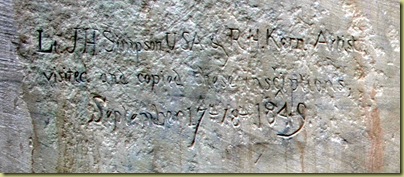
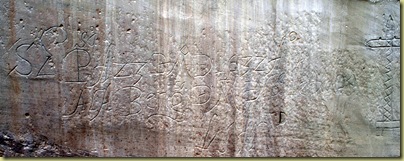
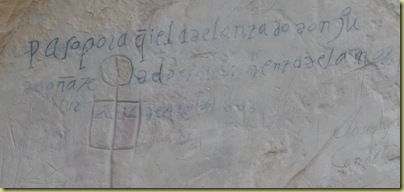
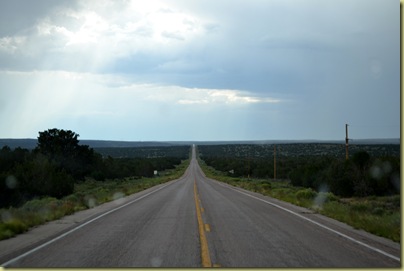
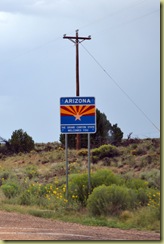

No comments:
Post a Comment